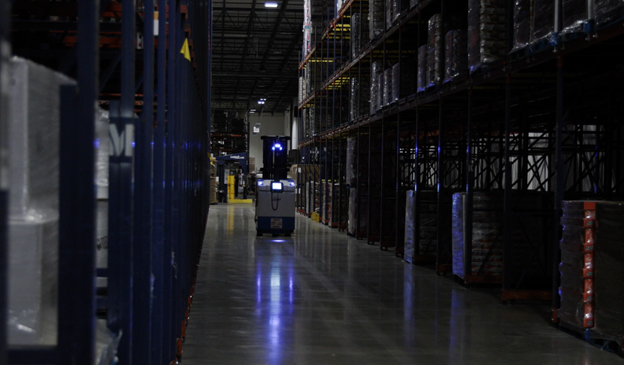In the pursuit of a more sustainable future, the marriage of cutting-edge technology and eco-conscious practices has given rise to lights-out warehousing, a transformative approach to distribution center operations. Automated Guided Vehicles (AGVs) are playing a pivotal role in this revolution, not only by enhancing efficiency, but also by significantly contributing to the reduction of environmental impact across Scope 1, Scope 2, and Scope 3 emissions.
- The Green Promise of Lights-Out Warehousing: Lights-out warehousing, characterized by its reliance on AGVs for fully automated operations, has emerged as a beacon of sustainability in the logistics industry. At its core, this model optimizes resource usage, reduces waste, and addresses the three scopes of emissions – Scope 1 (direct emissions), Scope 2 (indirect emissions from purchased energy), and Scope 3 (indirect value chain emissions).
- AGVs and Scope 1 Emissions: AGVs operate on electric power, eliminating the need for traditional internal combustion engines associated with forklifts and other manual handling equipment. By doing so, they contribute significantly to the reduction of direct emissions (Scope 1). Traditional distribution centers often rely on fossil-fuel-powered machinery, which releases pollutants into the atmosphere. In contrast, AGVs, being electrically powered, have a much lower carbon footprint, promoting cleaner air and a healthier working environment.
- Scope 2 Emissions Reduction through AGV Adoption: The deployment of AGVs in lights-out facilities also makes a substantial impact on Scope 2 emissions, which stem from the indirect emissions associated with purchased energy. Traditional distribution centers typically rely on grid electricity, which may have a high carbon intensity depending on its source. AGVs, when charged using renewable energy sources such as solar or wind power, can significantly mitigate these indirect emissions, making lights-out warehousing a more sustainable choice.
- AGVs and Supply Chain Sustainability (Scope 3): Looking beyond the warehouse walls, AGVs contribute to the reduction of Scope 3 emissions by optimizing supply chain logistics. The continuous operation of AGVs ensures a seamless flow of goods, minimizing the need for excess inventory storage and long-distance transportation. This reduction in unnecessary movement and storage translates to fewer emissions associated with transportation, storage facilities, and overall supply chain operations.
- Efficiency Unleashed: Inventory Management, Order Fulfillment, and JIT Logistics: Beyond their environmental impact, AGVs bring operational efficiency to lights-out warehousing, further enhancing sustainability. Real-time inventory tracking and management by AGVs minimize the likelihood of overstocking or stockouts, reducing waste and maximizing resource efficiency. The optimization of order fulfillment processes ensures that products are picked, packed, and shipped with minimal energy consumption, contributing to a more sustainable approach to logistics.
As the lights-out warehousing revolution unfolds, it’s clear that AGVs are not only transforming distribution centers, but also guiding the industry towards a more sustainable future. By addressing emissions across Scope 1, Scope 2, and Scope 3, AGVs illuminate a path where efficiency and sustainability coexist, proving that the warehouse of the future can be both technologically advanced and environmentally responsible. As the logistics industry continues to evolve, the integration of AGVs in lights-out facilities is not just a step forward—it’s a leap towards a greener, more sustainable tomorrow.


